- Connecting audio
- Audio PC
- Raspberry & Co
- All in Ones
- Bluetooth
- Chromecast
- Streaming audio player
- Music server
- USB Audio
- Real-time audio over IP
- FireWire DAC
- Multi-channel DAC
- NAS
- Remote control
- Vinyl rippers
- Acoustic materials
- Active crossover
- Active speakers
- Single driver speakers
- Invisible speakers
- Sound card
- Digital room correction
- Headphone
- Portable media players
SPDIF
The standard to connect audio components ‘digital’ is the S/PDIF protocol.
It can be done optical (Toslink) or electrical (coax).
Toslink has a very bad reputation in the audiophile world.
It is said to be high on jitter.
It does shield the DAC galvanic from the PC.
The pro and cons of Toslink and coax are discussed here.
Toslink
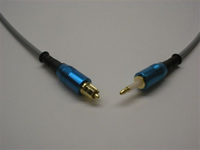
You won't find many computers with Toslink.
Apple and Toshiba are exceptions to this rule.If Mohammed will not come to the mountain, the mountain will go to Mohammed.
That is exactly what happened, as the audio industry most of the time offers legacy SPDIF connectivity instead of USB, especially the multimedia PC's close the gap by offering SPDIF over optical or electrical.
Many Apple owners don’t know that the headphone out doubles as a Toslink out.
Likewise, the microphone input accepts Toslink in.
You need a mini-Toslink adapter or a mini to male Toslink cable.
Toslink specs of the iMac:
- Jack type: 3.5 mm (1/8-inch) stereo combo
- Digital audio signal-to-noise ratio (SNR): >130 dB
- Digital audio total harmonic distortion + noise (THD+N): <-130 dB (0.00003%)
More about Toslink
Coax
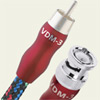
Coax cables in general use RCA or BNC connectors. Range can be 10 – 15 meter or even more. The ones equipped with RCA connectors look exactly like an analogue RCA cable but for best results it must be a true 75 ohm cable.
A ‘digital’ cable can be used for analogue as well. More about digital cables can be found here.
Not a recommended practice but for short runs, an 'analogue' cable might do the job.
Then of course you have people who think that you can connect the digital out of a sound card with a RCA Y-splitter cable to the analogue in of your amp or active speakers.
Electronics are simple, if you make a mistake the spot is automatically marked with a smoke signal.
A quad shield RG6 (antenna cable) will do the job at a very low price. Some even run S/PDIF over 30 m RG6 with success. Something to keep in mind before you buy an Audioquest Eagle Eye with 72V DBS Digital Cable at $650,- per meter.
BNC
You need a true 75 Ohms cable for SPDIF.
Best is to terminate it with true 75 Ohm connectors.
If you don’t you still have an impedance mismatch.
RCA connecters are not 75 Ohm.
That is the reason why BNC connectors are recommended.
Some go as far as to change the RCA receptacle on the DAC by a BNC and buy a cable terminated with BNC.
Be careful because many BNC connectors are 50 instead of 75 Ohm!
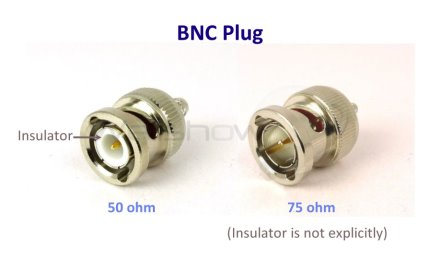
Wellshow - BNC Connector Introduction
If the PC doesn't have SPDIF this might a matter of not having a receptacle.
Often there is SPDIF out on the motherboard.
If you don't mind a bit of DIY you can make your own SPDIF out.
http://forum.videohelp.com/threads/333711-S-PDIF-connectors-and-making-your-own-MB-S-PDIF-connector
or get yourself a SPDIF bracket
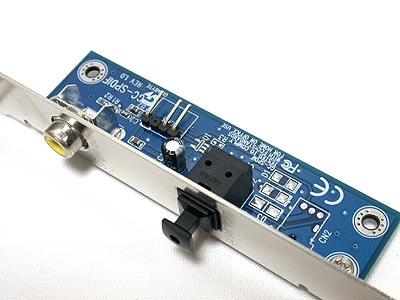
AES/EBU
 The prosumer standard is AES/EBU also know as AES3 (1985). It is a balanced connection using XLR connectors.
The prosumer standard is AES/EBU also know as AES3 (1985). It is a balanced connection using XLR connectors.
A 110 Ω cable must be used.
Lengths up to 300 m are possible.
Not only the cable needs to be 110 Ω but to avoid reflections, the termination should be 110 Ω as well.
This is where the XLR termination totally fails.
That’s why some recommend to use AES3id instead.
This is SPDIF but terminated with true 75 Ohm BNC connectors.
You can’t measure this impedance using a conventional volt-ohm meter.
Well you can but you will measure something close to zero.
This is the DC impedance
These standards refer to the characteristic impedance.
This is the AC impedance of the transmission line and is defined as:

L=inductance per unit length
C=capacitance per unit length
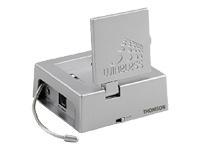
Wireless video transmitter
One day I stumbled upon this post: A guy connected two audio devices by sending the S/PDIF over a wireless video transmitter.

